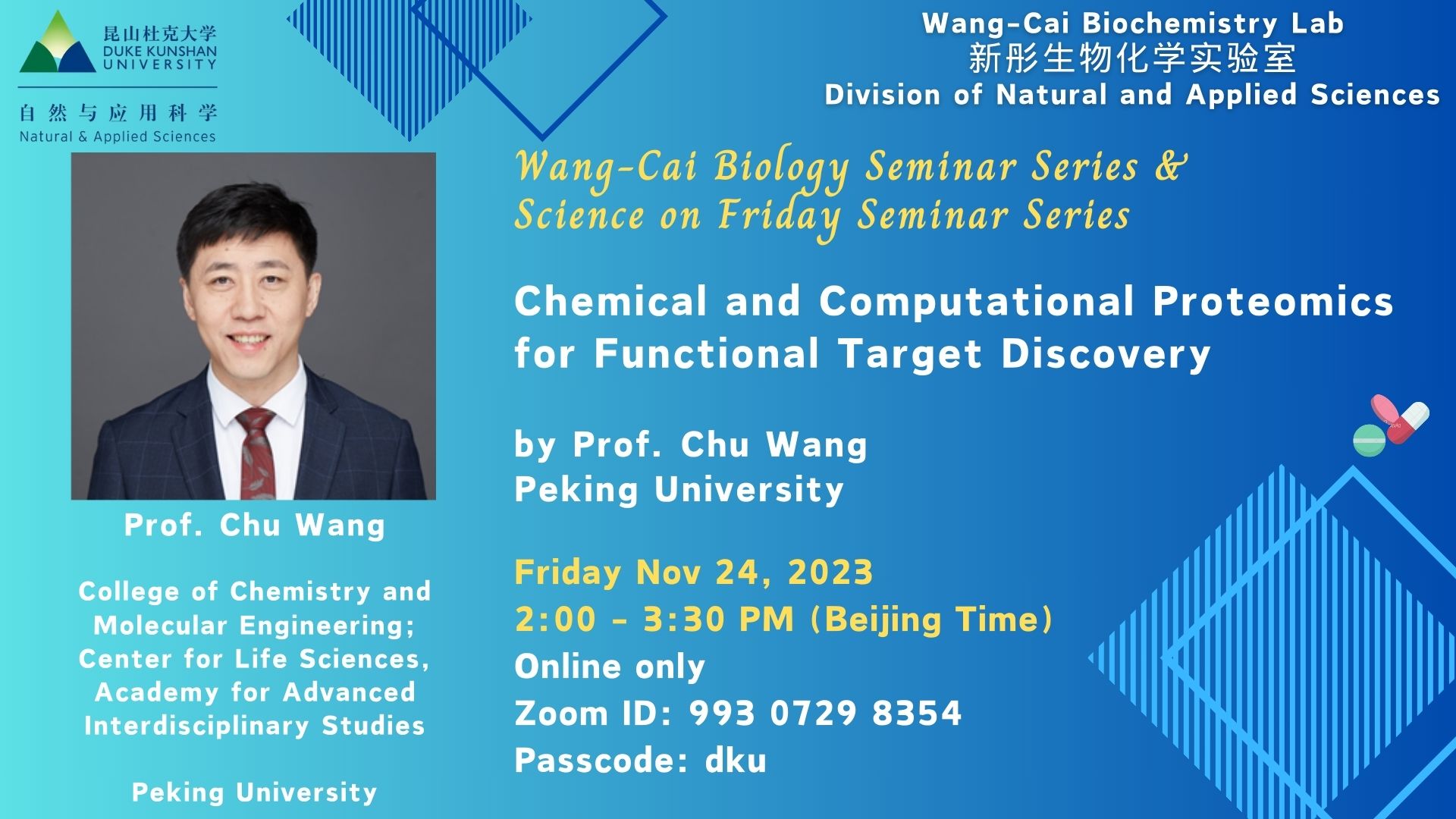Speaker: Prof. Chu Wang
College of Chemistry and Molecular Engineering;
Center for Life Sciences, Academy for Advanced Interdisciplinary Studies
Peking University

Date & Time
Date: Friday Nov 24, 2023
Time: 2:00 – 3:30 PM (Beijing Time)
Online only
Zoom ID: 993 0729 8354
Passcode: dku
Biography:
Chu Wang received Ph.D. in 2007 from University of Washington under the guidance of Professor David Baker, training in the area of computational protein structural prediction and design. He then worked as a postdoctoral fellow with Professor Benjamin Cravatt at The Scripps Research Institute, Lo Jolla, and developed multiple chemical proteomic methods to profile reactive cysteines and modifications in proteomes. In 2014, he joined Peking University to start his independent career and was promoted to tenured professor of Chemical Biology in 2020. He has won Young Chemical Biologist Award from International Chemical Biology Society and Distinguished Young Scholar Award from National Natural Science Foundation of China. His research interest is to develop chemical and computational proteomics methods to enable quantitative profiling of functional enzymes, protein post-translational modifications as well as protein-ligand interactions in proteomes.
Seminar abstract:
Genome sequencing projects have revolutionized our view of the complexity of prokaryotic and eukaryotic proteomes, however, we are also left with a daunting challenge of functionally annotating these large number of predicted proteins. Chemical proteomic methods, such as activity-based protein profiling (ABPP), have been developed aiming at systematically discovering new functional targets directly from native proteomes. In this talk, I will present recent progresses from my laboratory which combine ABPP-based chemical proteomic, biochemical and computational strategies to uncover sites of post-translational modifications as well as targets of bioactive ligands in proteomes.
